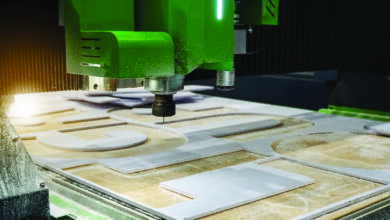Braille is likely the least used of all the elements on accessible signs since so few people fall into the category of those who can’t see much at all and rely on the sense of touch to read signs. Even among functionally blind people, most of them don’t read Braille. Learning Braille is not simple, so it’s mostly younger people who become blind early in life who learn to read it. The raised characters required to accompany the Braille on room identification signs are there for the rest of the severely visually impaired population to read.
The majority of people who qualify as visually disabled can use their vision to get around. What that means is that there are many signs and portions of signs that are still made the old-fashioned way: with screen-printed, digitally printed, or vinyl graphics; or with engraving so that color-contrasting text is revealed on the sign plaque.
-Sharon Toji, The ADA Sign Lady



